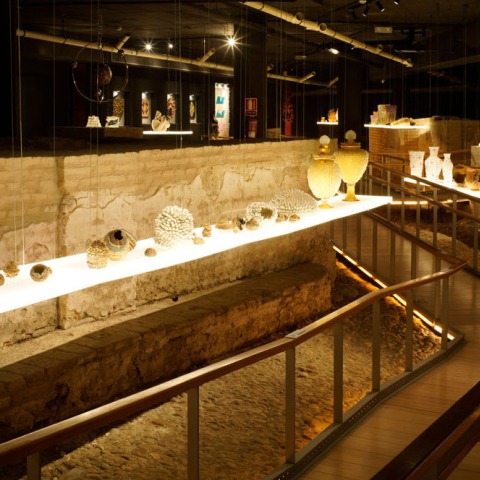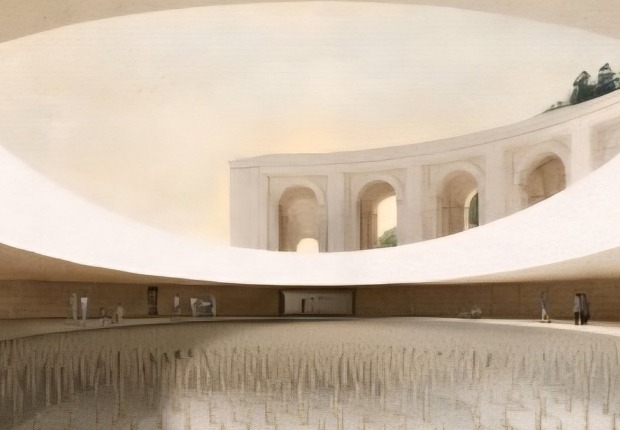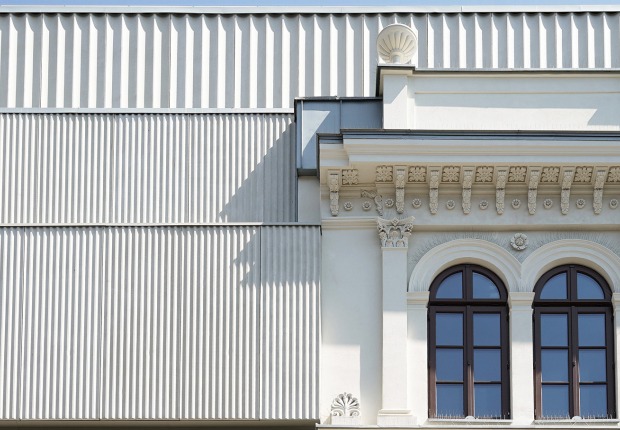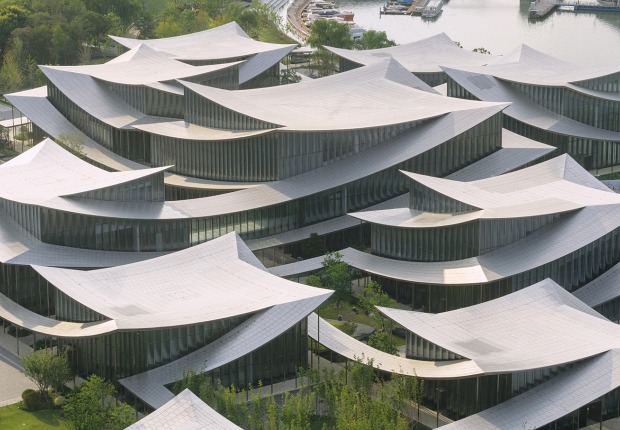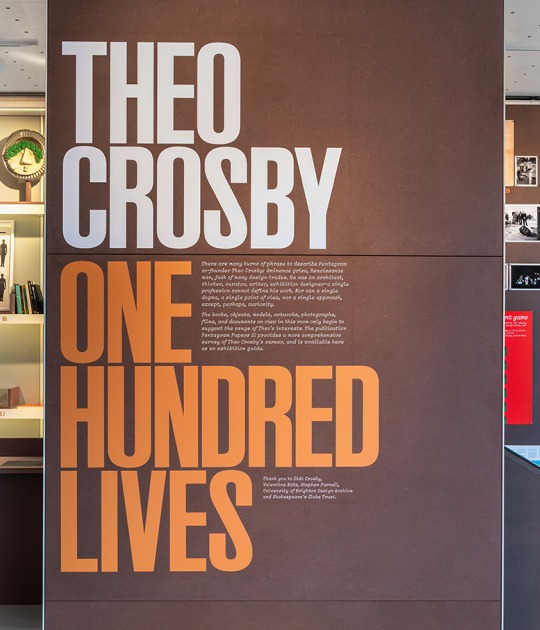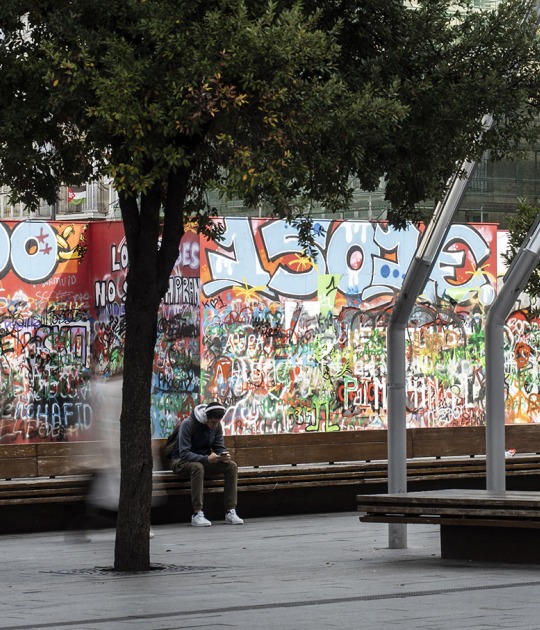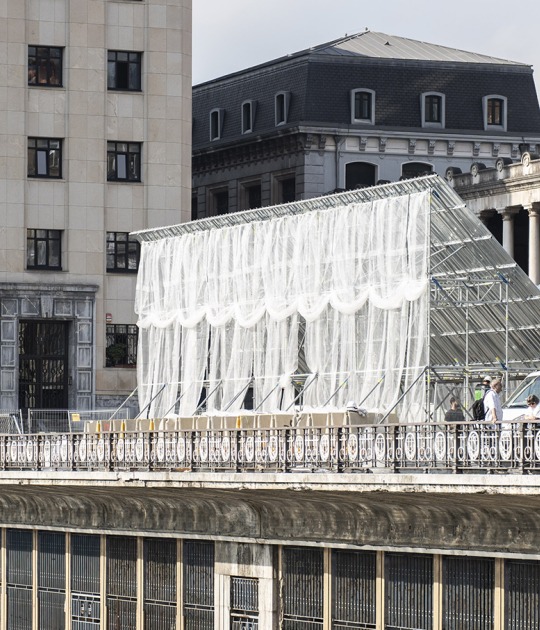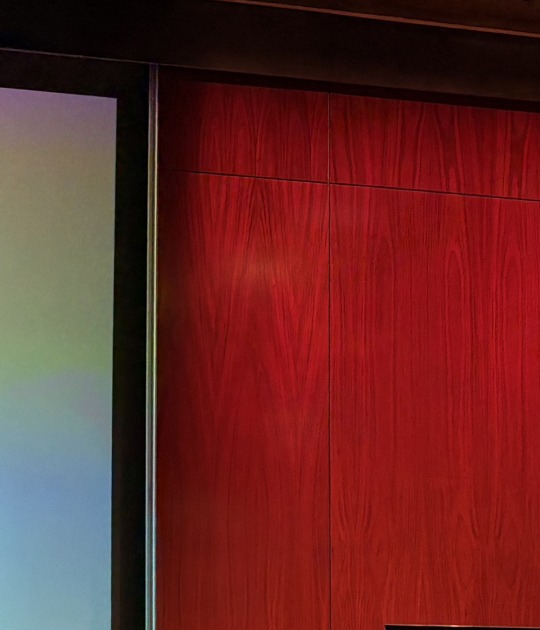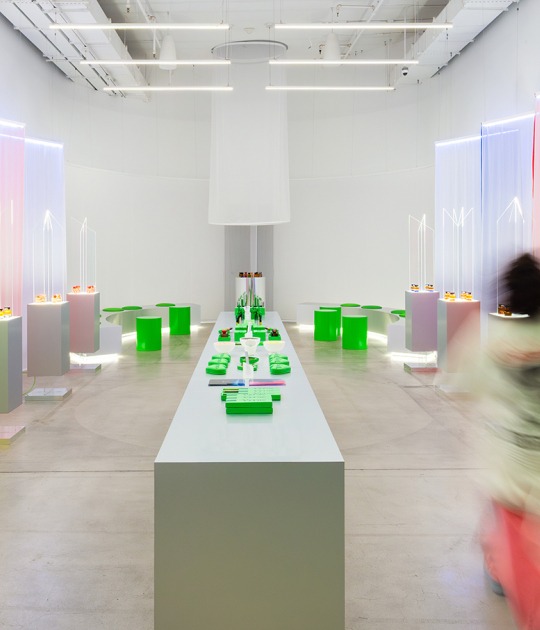With this premise and the Heritage conditions, to safeguard the ruins, Pablo M. Millán and his team attempted to undertake the challenge of not touching them, but only observing them from the exhibition as a backdrop for the sample of contemporary artisans that make up the exposure. The complexity of the intervention is resolved by making the entire exhibition levitate by being suspended from the roof structure, which currently corresponds to the floor of the Triana market.
Craftsmen and artists from different origins show their work in a permanent dialogue, not only with the material of the pieces created but also with the container itself. The route is presented with suspended and illuminated stones, where each of the pieces in the exhibition is displayed. These stones are the containing and illuminating planes.

Exhibition design “Maestros del futuro. Artesanía y diseño de Europa” by Pablo M. Millán. Photograph by Javier Callejas Sevilla.

Exhibition design “Maestros del futuro. Artesanía y diseño de Europa” by Pablo M. Millán. Photograph by Javier Callejas Sevilla.
Description of project by Pablo M. Millán
When Saint Augustine in the Vulgate (Jn, 20, 17) speaks of the Noli me tangere, he recognizes two coinciding realities in the same space but with a different nature. With that expression, he shows the impossibility of interacting between them. One human nature, the other divine. But this does not prevent dialogue; quite the contrary, it encourages it in the face of each other's needs.
Under the premise of coexistence between two realities, we propose the design of this exhibition. After choosing the patrimonial context of the Castle of San Jorge in Seville as the place to exhibit this sample of contemporary artisans, we demanded not to touch the ruins, only to observe them from the exhibition as a backdrop. The complexity of suspending the entire collection from the roof structure (currently Triana Market) made the intervention even more complex.

Exhibition design “Maestros del futuro. Artesanía y diseño de Europa” by Pablo M. Millán. Photograph by Javier Callejas Sevilla.
A space for dialogue is sought. It might seem like a contradiction that, in the remains of a castle from the Inquisition, there is an exhibition that encourages dialogue. Craftsmen and artists from different origins show their work in a permanent dialogue, not only with the material of the pieces created, but also with the container itself.
After wandering through the ruin, illuminated stones are suspended that will contain each of the precious pieces in the exhibition. These stones, almost weightless, will be the container and illuminating planes. Thus, the perfect geometry of precise pieces will be in charge of establishing a logic for the ruins, together with their qualification and integration.
After passing through the illuminated ruins with these perfect geometries without being touched, the need for dialogue between the pieces themselves and the heritage they inhabit becomes clear.
